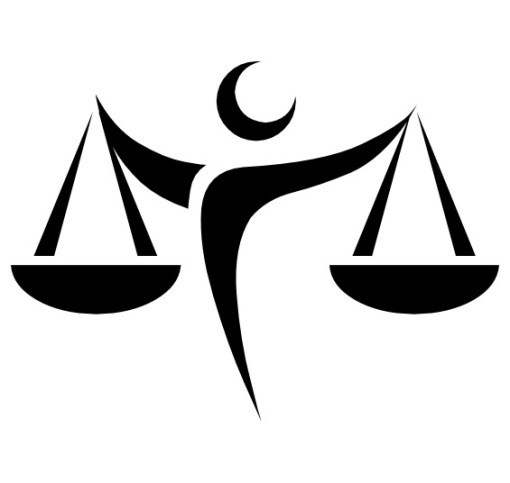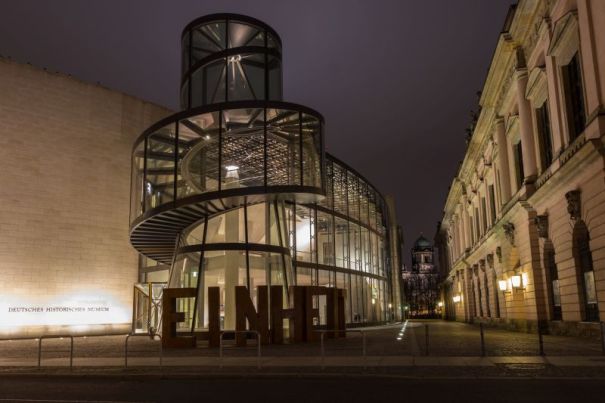
 Project: Peter Eisenman, Berlin, Germany (Photo: Gosia Głowacka and René Sachse, 12.03.2016)
Project: Peter Eisenman, Berlin, Germany (Photo: Gosia Głowacka and René Sachse, 12.03.2016)
The Memorial to the Murdered Jews of Europe (German: Denkmal für die ermordeten Juden Europas), also known as the Holocaust Memorial (German: Holocaust-Mahnmal), is a memorial in Berlin to the Jewish victims of the Holocaust, designed by architect Peter Eisenman and engineer Buro Happold. It consists of a 19,000 m2 (4.7-acre) site covered with 2,711 concrete slabs or “stelae”, arranged in a grid pattern on a sloping field. The stelae are 2.38 m (7 ft 10 in) long, 0.95 m (3 ft 1 in) wide and vary in height from 0.2 to 4.7 m (7.9 in to 15 ft 5.0 in).[2] They are organized in rows, 54 of them going north–south, and 87 heading east–west at right angles but set slightly askew. An attached underground “Place of Information” (German: Ort der Information) holds the names of approximately 3 million Jewish Holocaust victims, obtained from the Israeli museum Yad Vashem.
Building began on April 1, 2003, and was finished on December 15, 2004. It was inaugurated on May 10, 2005, sixty years after the end of World War II, and opened to the public two days later. It is located one block south of the Brandenburg Gate, in the Friedrichstadt neighborhood. The cost of construction was approximately €25 million.
According to Eisenman’s project text, the stelae are designed to produce an uneasy, confusing atmosphere, and the whole sculpture aims to represent a supposedly ordered system that has lost touch with human reason. The Foundation Memorial to the Murdered Jews of Europe official English website, states that the design represents a radical approach to the traditional concept of a memorial, partly because Eisenman said the number and design of the monument had no symbolic significance.However, observers have noted the memorial’s resemblance to a cementery.
On January 27, 2000 a celebration was held marking the symbolic beginning of construction on the memorial site. The first provisional stelae were erected in May 2001. An international symposium on the Memorial and the Information Centre together with historians, museum experts, art historians and experts on architectural theory was held by the Foundation in November 2001. In the spring of 2003, work began on the construction of the Memorial. At the same time, an information point was erected at the fence surrounding the construction site. On December 15, 2004 there was a public ceremony to put the last of the 2,711 stelae in place. The official ceremony opening of the memorial was on May 10, and the Memorial and the Information Centre was opened to the public on May 12, 2005. By the end of 2005 around 350,000 people had visited the Information Centre.
In the first year after it opened in May 2005, the monument attracted over 3.5 million visitors. It is estimated that some 5 million visitors have visited the Information Centre between its opening in May 2005 and December 2015. Over the past 10 years (2006 – 2015), an average of 460,000 people have visited, or over 10,000 per day. The foundation operating the memorial considered this a success; its head, Uwe Neumärker, called the memorial a “tourist magnet”.
The monument has been criticized for only commemorating the Jewish victims of the Holocaust, however, other memorials have subsequently opened which commemorate other identifiable groups that were also victims of the Nazis, for example, the Memorial to Homosexuals Persecuted Under Nazism (in 2008) and the Memorial to the Sinti and Roma Victims of National Socialism (in 2012). Many critics argued that the design should include names of victims, as well as the numbers of people killed and the places where the killings occurred. Meanwhile, architecture critic Nicolai Ouroussoff claimed the memorial “is able to convey the scope of the Holocaust’s horrors without stooping to sentimentality – showing how abstraction can be the most powerful tool for conveying the complexities of human emotion.”
(source: Wikipedia)
 Made by: Oleg Diergaczow, cafe”Dzyga” in Lviv, The Ukraine (Photo: Gosia Głowacka, July 2003)
Made by: Oleg Diergaczow, cafe”Dzyga” in Lviv, The Ukraine (Photo: Gosia Głowacka, July 2003)


 Project: Peter Eisenman, Berlin, Germany (Photo: Gosia Głowacka and René Sachse, 12.03.2016)
Project: Peter Eisenman, Berlin, Germany (Photo: Gosia Głowacka and René Sachse, 12.03.2016)


 Designer: Ieoh Ming Pei, Berlin, Germany (Photo: René Sachse, 12.03.2016)
Designer: Ieoh Ming Pei, Berlin, Germany (Photo: René Sachse, 12.03.2016)